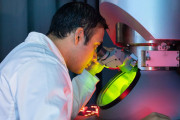 2021-09-29
2021-09-29
Researchers in Saudi Arabia have developed micrometer-scale light emitting diodes (μLEDs) that can efficiently emit light across the entire visible-light spectrum. Image credit: KAUST The team at King Abdullah University of Science and Technology (KAUST) describes μLEDs as the ‘ideal building block’ for next-generation microLED displays for head-mounted monitors, mobile phones and televisions due to their brightness, quick response and reduced energy consumption. Just as with conventional LED displays, μLEDs prod...
Continue reading →
2021-05-12
KING ABDULLAH UNIVERSITY OF SCIENCE & TECHNOLOGY (KAUST)
A new micro-light-emitting diode (micro-LED) developed at KAUST can efficiently emit pure red light and may help in the quest to develop full-color displays based on just a single semiconductor.
Micro-LEDs are a promising technology for the next generation of displays. They have the advantage of being energy efficient and very small. But each LED can only emit light over a narrow range of colors. A clever solution is to create devices that combine many different ...
Continue reading →
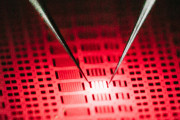 2021-05-12
2021-05-12
Saudi Arabia’s King Abdullah University of Science and Technology (KAUST) has reported indium gallium nitride (InGaN)-based red micro-LEDs that they plan to integrate with green and blue micro-LEDs to create full-color micro-displays (Zhuang Z, Iida D and Ohkawa K, ‘Investigation of InGaN-based red/green micro-light-emitting diodes’, Optics Letters 46, 1912-1915 (2021)).
Nitride semiconductors can be used to make blue and green micro-LEDs, whereas phosphide semiconductors are currently used for red light. But combining different semi...
Continue reading →
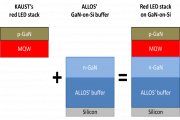 2020-07-21
2020-07-21
ALLOS Semiconductors announced its collaboration with Prof. Ohkawa and his team at King Abdullah University of Science and Technology (KAUST) for realizing high efficiency nitride-based red LEDs on large diameter silicon substrates.
The collaboration will focus on solving fundamental issues like the large lattice mismatch and the quantum-confined Stark effect (QCSE) which limit the adoption of red nitride-based LEDs for practical industry usage. In particular, for the emerging field of Micro LED displays there is a strong demand to enable red LEDs on ...
Continue reading →
 2020-07-20
2020-07-20
Researchers of King Abdullah University of Science and Technology (KAUST) have been working on improve efficiency of red Micro LEDs and they recently announced the achievement of manufacturing stable red Micro LED based on InGaN.
(Image: KAUST)
A major challenge facing the development of Micro LEDs is to integrate red, green and blue light into a single LED chip. Current RGB LEDs are made by combining two kinds of materials with InGaP red LEDs and InGaN blue and green LEDs. "Creating RGB displays requires the mass transfer...
Continue reading →
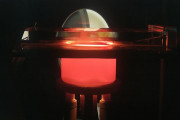 2020-05-07
2020-05-07
A research team at the King Abdullah University of Science and Technology (KAUST) announced their achievement in manufacturing InGaN red LEDS with a peak wavelength of 665nm as well as improved light output power and external quantum efficacy. Their achievement is believed to support more efficient process of full color Micro LED display development.
(Image: KAUST)
One of the challenges of Micro LED display is producing red LEDs with GaN, which is considered almost impossible, according to Kazuhiro Ohkawa, leader of the research group. Red colo...
Continue reading →
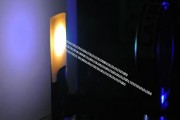 2016-08-15
2016-08-15
While Wi-Fi and Bluetooth are now well established technologies, there are several advantages gained by shortening the wavelength of the electromagnetic waves used for transmitting information.
Continue reading →
 2021-09-29
2021-09-29
 2021-05-12
2021-05-12
 2020-07-21
2020-07-21
 2020-07-20
2020-07-20
 2020-05-07
2020-05-07
 2016-08-15
2016-08-15